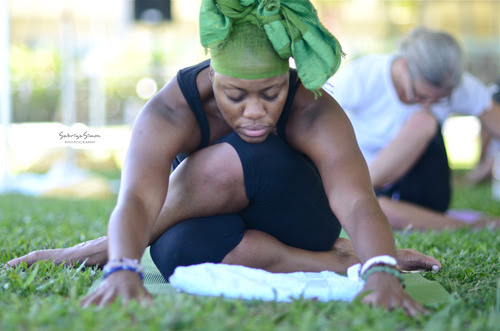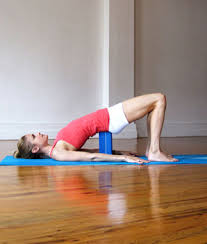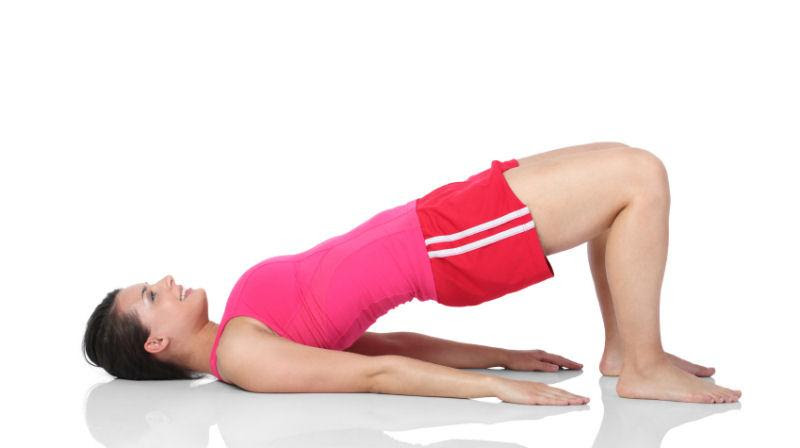 There can be many reasons for headaches, and any one headache’s cause can be multifactorial in nature; tension and stress, allergies, bad posture, lack of sleep or hunger and toxicity can all contribute to headaches. There are many aspects of yoga that can address headaches caused by all of these issues; but since the majority of headaches are usually tension related, let’s focus there. Firstly, the moment you feel a headache coming on is the best time to treat it, rather than later down the road when the pain becomes more intense and more difficult to reduce, like the old saying goes ‘an ounce of prevention is worth a pound of cure’, this couldn’t be more true in the case of the tension headache! At the first onset, try some deep breathing or pranayama exercises, sometimes this alone can thwart tension and stress from building up. Deep abdominal breathing is very calming and soothing, as well as ujjayi breathing, where you breathe through your nostrils with a slight tension in the back of your throat—this creates a sound and a rhythm that is easy to focus on and that is instantly calming and centering. At times with the initiation of breathing or stillness your headache can even slightly increase; be patient and stay with it, and it will begin to subside.
There can be many reasons for headaches, and any one headache’s cause can be multifactorial in nature; tension and stress, allergies, bad posture, lack of sleep or hunger and toxicity can all contribute to headaches. There are many aspects of yoga that can address headaches caused by all of these issues; but since the majority of headaches are usually tension related, let’s focus there. Firstly, the moment you feel a headache coming on is the best time to treat it, rather than later down the road when the pain becomes more intense and more difficult to reduce, like the old saying goes ‘an ounce of prevention is worth a pound of cure’, this couldn’t be more true in the case of the tension headache! At the first onset, try some deep breathing or pranayama exercises, sometimes this alone can thwart tension and stress from building up. Deep abdominal breathing is very calming and soothing, as well as ujjayi breathing, where you breathe through your nostrils with a slight tension in the back of your throat—this creates a sound and a rhythm that is easy to focus on and that is instantly calming and centering. At times with the initiation of breathing or stillness your headache can even slightly increase; be patient and stay with it, and it will begin to subside.
Yoga poses, or asanas, also can be quite helpful. Poses that can address areas of tension, commonly the neck and shoulders, include: Setu bandha, or bridge pose, gomukasana, or cow face pose and child’s pose.
Simple twists, either seated or supine, are great as well. These poses immediately engage the muscles in activity around the neck and shoulders in a way that actually softens and releases them, increasing circulation and oxygen to those areas. Part of the reason asanas work so well at reducing headache pain is in the mechanics of how traditional yoga asanas work; you hold poses and release, this creates a ‘pump’ effect on the muscle in question and blood flow is pumped in, bringing with it oxygen and nutrients and creating a muscle that is more receptive each time you exit the pose, so it can be helpful to do each pose two or more times with a short break in between.
 Slow moving vinyasas, or flows, are helpful as well; these also increase circulation and relieving tension and tight muscles. Flow yoga focuses on the movement in between two poses, usually moving with the breath, and the transition is just as important as the pose itself. In vinyasa style yoga the poses themselves are usually not held for very long as they are in traditional hatha or yin yoga. Sometimes called ‘moving meditation’, practicing vinyasa yoga creates a mentally pleasing swaying and oscillating effect on the nervous system that can quickly extinguish even the worst headaches.
Slow moving vinyasas, or flows, are helpful as well; these also increase circulation and relieving tension and tight muscles. Flow yoga focuses on the movement in between two poses, usually moving with the breath, and the transition is just as important as the pose itself. In vinyasa style yoga the poses themselves are usually not held for very long as they are in traditional hatha or yin yoga. Sometimes called ‘moving meditation’, practicing vinyasa yoga creates a mentally pleasing swaying and oscillating effect on the nervous system that can quickly extinguish even the worst headaches.

